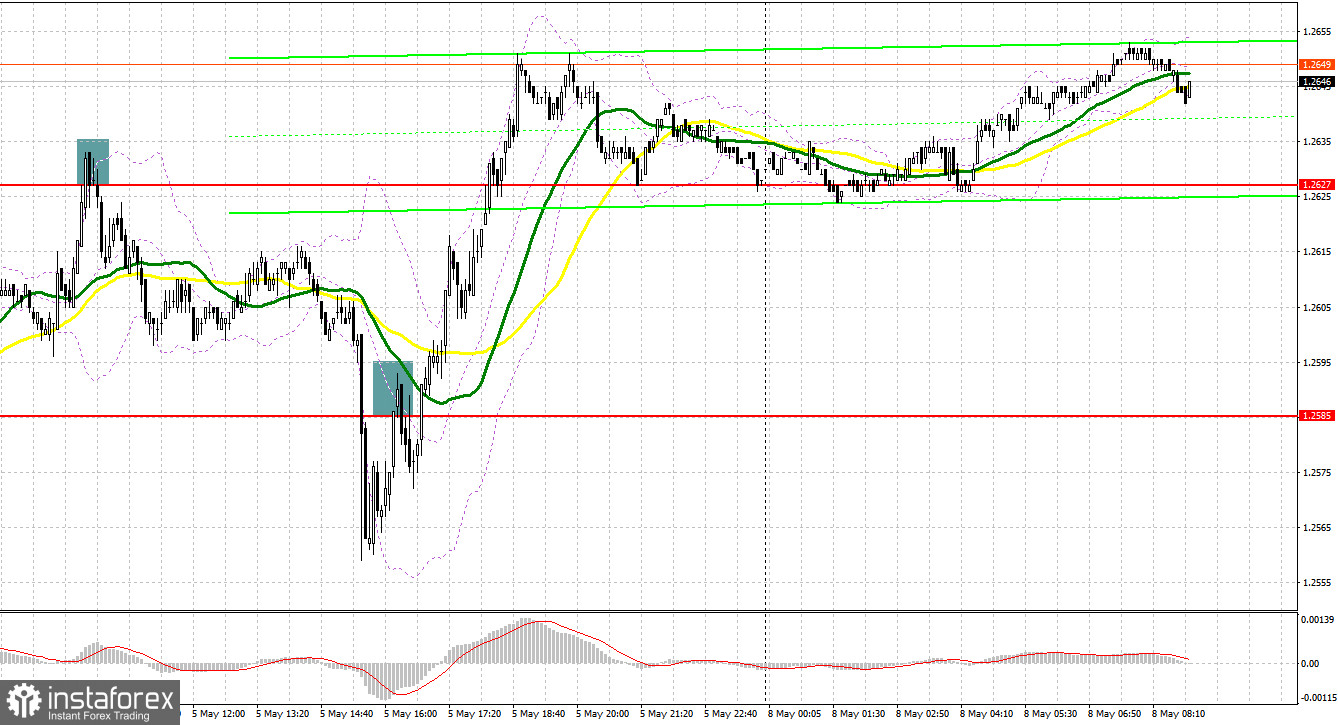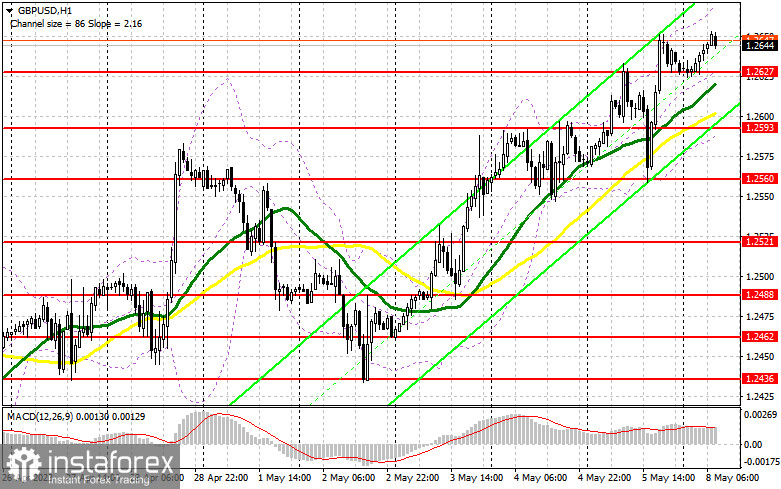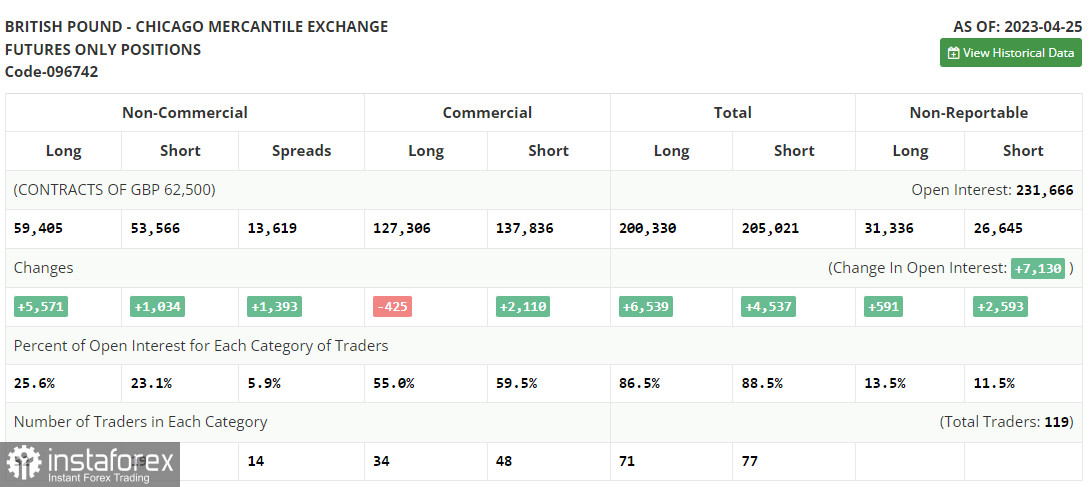
To open long positions for GBP/USD, it is required:
Upbeat data on the US labor market exerted strong pressure on GBP buyers last week. However, they coped with that successfully. They took advantage of a correction to push the pound to new monthly highs. The pair was also bullish during the Asian session today. In light of an empty macroeconomic calendar in the UK in the first half of the day, bullish momentum will most likely continue until the next major resistance of 1.2670 is updated.
However, the pound has recently grown quite significantly and the future interest rate hike by the Bank of England is already being priced. So, in my opinion, its further upward potential will be limited. The trading plan will be to buy on corrections near 1.2627 support. A false breakout there will generate a buy signal, targeting a new monthly high of 1.2670. A breakout and consolidation above this range will create an additional buy signal with the target at 1.2709. Another target is seen at 1.2755, where I am going to take profit.
If the price falls to the 1.2627 area with the absence of buyers there, the correction may get deeper. In this case, I will open long positions on a false breakout at 1.2593, with the bullish moving averages located above the mark. I also plan to buy GBP/USD immediately on a rebound from a low of 1.2560, allowing a correction of 30-35 pips intraday.
To open short positions for GBP/USD, it is required:
On Friday, sellers failed to stay at the lows. In case of further growth, which is most likely, it would be nice for the bears to break through the 1.2670 area. If they fail, pressure on the pound will increase after a false breakout. The bearish target is seen at 1.2627. A breakout and an upside retest of this range will generate a sell signal with the target at 1.2593. The most distant target stands at a low of 1.2560, where I am going to take profit.
If GBP/USD goes up and there is a lack of activity at 1.2670, which is most likely to occur in the absence of important statistics, I will sell after a test of the next resistance at 1.2709. Only a false breakout there will create a sell entry point. If the downward movement does not go on, I will sell GBP/USD on a rebound from a high of 1.2755, allowing a bearish correction of 30-35 pips within the day.


Indicator signals:
Moving averages
Trading is carried out above the 30-day and 50-day moving averages, which indicates a bullish continuation.
Note: The period and prices of moving averages are viewed by the author on the hourly chart and differ from the general definition of classic daily moving averages on the daily chart.
Bollinger Bands
Support stands at 1.2593, in line with the lower band.
Indicator description:
- Moving average (MA) determines the current trend by smoothing volatility and noise. Period 50. Colored yellow on the chart.
- Moving average (MA) determines the current trend by smoothing volatility and noise. Period 30. Colored green on the chart.
- Moving Average Convergence/Divergence (MACD). Fast EMA 12. Slow EMA 26. SMA 9.
- Bollinger Bands. Period 20
- Non-commercial traders are speculators such as individual traders, hedge funds, and large institutions who use the futures market for speculative purposes and meet certain requirements.
- Long non-commercial positions are the total long position of non-commercial traders.
- Non-commercial short positions are the total short position of non-commercial traders.
- Total non-commercial net position is the difference between the short and long positions of non-commercial traders.
 English
English 
 Русский
Русский Bahasa Indonesia
Bahasa Indonesia Bahasa Malay
Bahasa Malay ไทย
ไทย Español
Español Deutsch
Deutsch Български
Български Français
Français Tiếng Việt
Tiếng Việt 中文
中文 বাংলা
বাংলা हिन्दी
हिन्दी Čeština
Čeština Українська
Українська Română
Română

